The Port of Duluth-Superior is the first thing you see when entering Duluth from the Thompson Hill overlook. It’s big. It’s busy. It’s always in motion. But have you ever considered what the port means for our region and your everyday life? You probably use things every day that our port helped transport. You may even eat something every day that our port helped transport!
We know it’s there, and we know it must be important because there’s always something happening down there. But what’s really happening?
Today, we’ll explore the Port of Duluth-Superior’s role in your life.
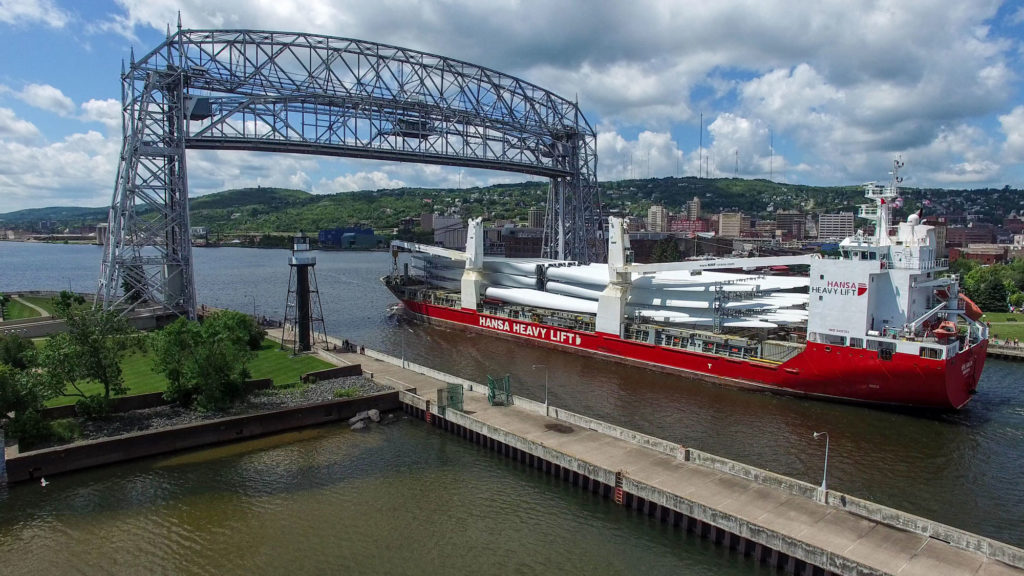
Goods must move from Point A to Point B. Does it matter how?
When you and your family buy things – either from local stores or online – all of that stuff takes a long journey before it lands on store shelves. Milk comes from cows, not the grocery store. Smartphones are built from raw materials mined from the Earth, and they need to be assembled before they can be purchased and used.
The minerals and raw materials that we need to build homes, cars, schools, skates, arenas, computers and smartphones – even your fridge! – are mined from the Earth. Eighty percent (80%) of the iron that goes into America’s first-pour steel-making comes from Minnesota’s Mesabi Iron Range and moves through the Port of Duluth-Superior, Two Harbors or Silver Bay.
Once the minerals and raw materials have been extracted from the Earth, they are loaded onto ships. These ships transport goods around the world, making a few key stops along the way before products make it to your home.
When a ship docks in a port, workers unload the materials onto trains or trucks (or conveyor belts) for the next leg of their journey. Whether moved by rail, road or conveyor, the materials are destined for a manufacturing facility, where they’re transformed into the pieces and components needed to build the products you use every day.
Next, the products hit the road, rail or seas again, back to a port or to retail stores, warehouses or directly to consumers.
What makes the Port of Duluth-Superior so special is that it brings waterborne shipping, road and rail transport together, connecting our region to the rest of the world. We call that a multimodal shipping hub.
Did you know that 90% of the world’s goods move by water, much of it on ships we call lakers and salties? You’ll see both in the Port of Duluth-Superior, and now you’ll know how to spot the difference.
Laker

- Travel only in the freshwater Great Lakes
- Carry bulk cargoes (examples: iron ore, limestone, coal, salt)
- Many feature a self-unloading conveyor system
- Designed to withstand harsh weather, waves and ice common to the Great Lakes
- Typically feature a straight bow (bow is the term used for the front end of a ship)
- Beam width and draft depth designed to navigate Great Lakes locks and channels
- Outnumber salties in the Port of Duluth-Superior by a ratio of approximately 10 to 1
Saltie
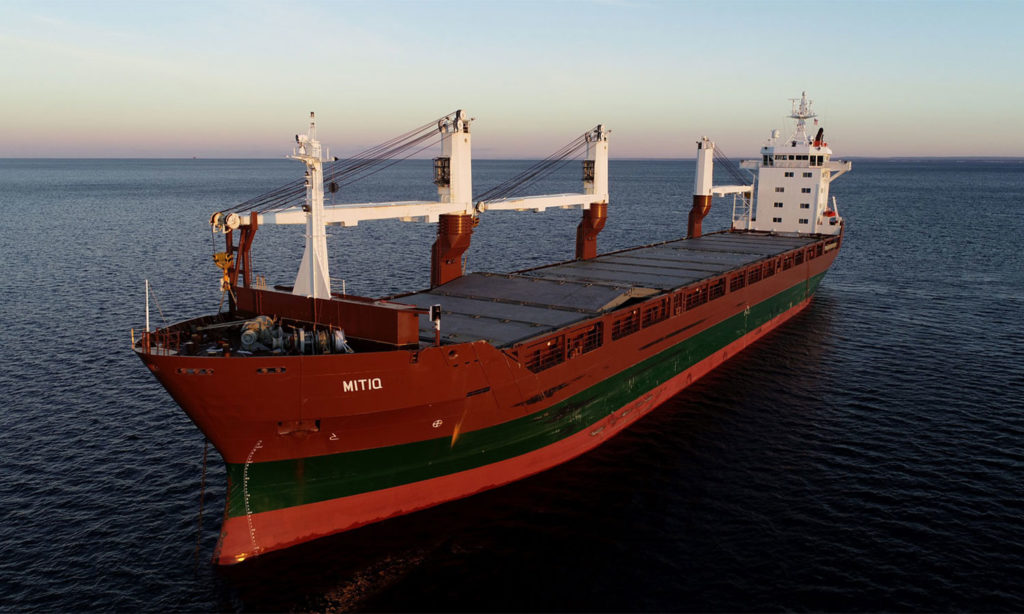
- Can travel in the Great Lakes and the world’s saltwater oceans
- Carry a variety of cargoes including dry bulk, liquid bulk and breakbulk cargoes (breakbulk is the term used for large cargoes lifted on and off ships one piece at a time by cranes or derricks, for example, wind turbine blades)
- Designed to withstand both the Great Lakes and ocean conditions
- Most distinguishing feature is often the raked or bulbous bow
- Often colorful and often include derricks rising above their decks (derrick is the term used for lifting equipment on board a ship)
- Sometimes rely on tugboats to help navigate tight spaces
Waterborne shipping is the most economical way to move goods and raw materials across the continent or around the globe, in part because ships can hold so much cargo. It would take 700 rail cars or 2,800 trucks to transport the same amount of cargo contained on one ship!
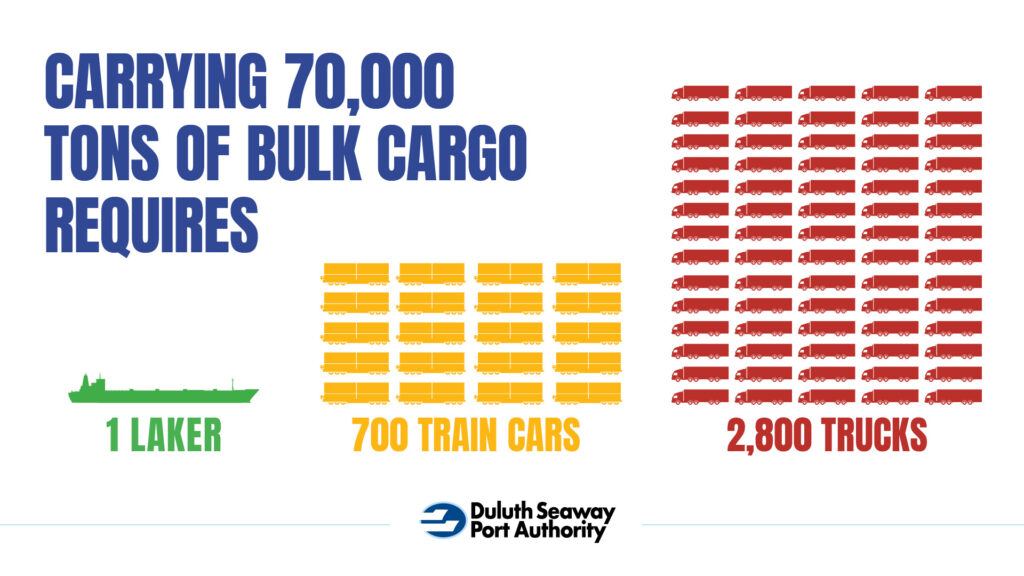
Let’s take a closer look at the environmental impact of maritime shipping.
It’s important to remember, however, that because ships can move such large amounts of cargo, and do so on the water using comparatively little fuel, waterborne shipping decreases greenhouse gas emissions, highway congestion and road wear. This helps keep the air cleaner and reduce drive times for you and your parents. Additionally, it reduces road and bridge repair costs. And even though waterborne shipping already earns high marks for greenhouse gas reductions, efforts are underway to improve that performance. In 2020, a new international limit on sulphur content in the fuel oil used on ships came into force, marking a significant milestone for improved air quality, preservation of the environment and protection of human health.
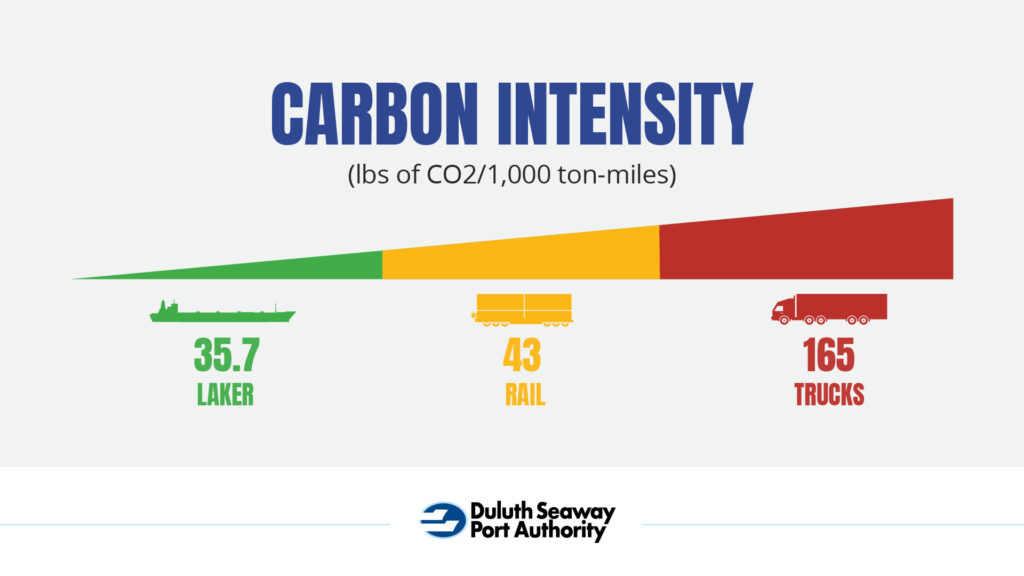
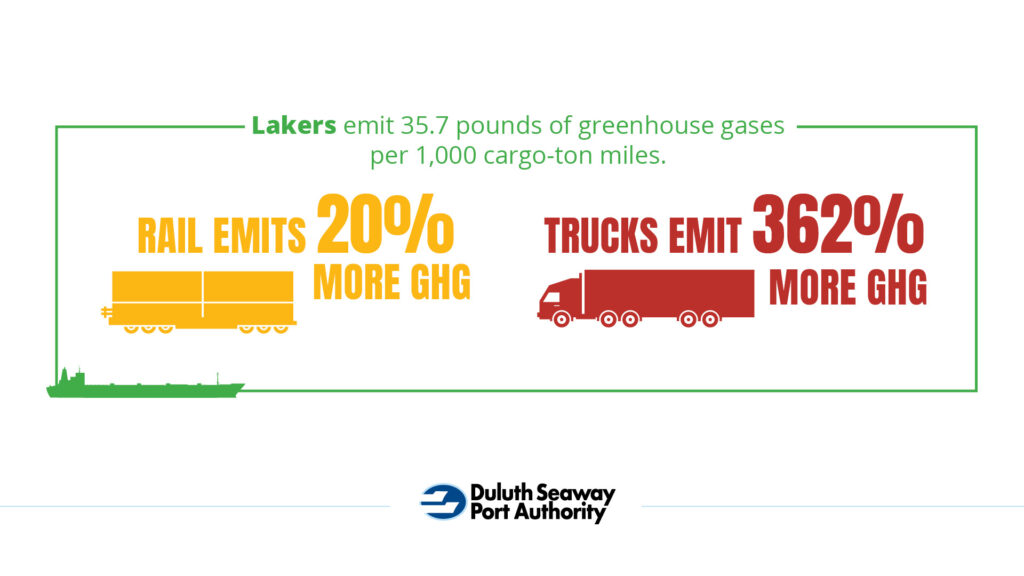
So much more than a tourist attraction
Our port is a truly amazing place. Whenever a ship sails under the aerial lift bridge, you’ll find people marveling at the size of the ships and the fact that those big lakers and salties can maneuver through such a tight space!
The Port of Duluth-Superior opened for commercial shipping in 1871, and today, more than 700 ships move through the port each year. It supports more than 7,000 jobs – you may know someone who works down here. It also creates more than $1.6 billion in economic activity that supports people and businesses throughout our region.
Duluth-Superior is North America’s farthest-inland seaport, which makes it very important. By using Highway H2O to the Port of Duluth-Superior, cargo can be moved all the way to the middle of North America more economically and with less environmental impact than traveling by road or rail from the Pacific Coast, East Coast or Gulf Coast. Our port connects the world to the heart of North America and us to the rest of the world.
Our port is the Great Lakes’ top tonnage port and one of the nation’s top 20. It connects Minnesota to the world through trade and commerce. This crucial link in the the supply chain supports every Minnesotan in every corner of the state.
We’re really proud of the work we do here, and we hope you are too!
Conclusion
Thank you for taking the time to learn more about our port. Now the next time you and your family stop to watch a ship coming into port, you can share everything you’ve learned about the maritime industry and the important work happening at the Port of Duluth-Superior. The port contributes to your everyday life by transporting the goods and raw materials needed to create things you use every day, including grain for food, iron ore for steel – and more! It also provides great jobs for parents, neighbors, family, friends, coaches – and maybe even you someday!
The Port of Duluth-Superior is so important to life and business in our region – and it’s probably a lot bigger than you thought.
Watch the video below for a bird’s-eye view of our port. You’ll get a closer look at lots of landmarks, icons and infrastructure you’ve seen from the shore. See if you can spot the Clure Public Marine Terminal, which is the port’s only general cargo terminal. It’s owned by the Duluth Seaway Port Authority and operated by Lake Superior Warehousing. We call that partnership Duluth Cargo Connect.
Please complete the form below to flex your newfound port knowledge.

